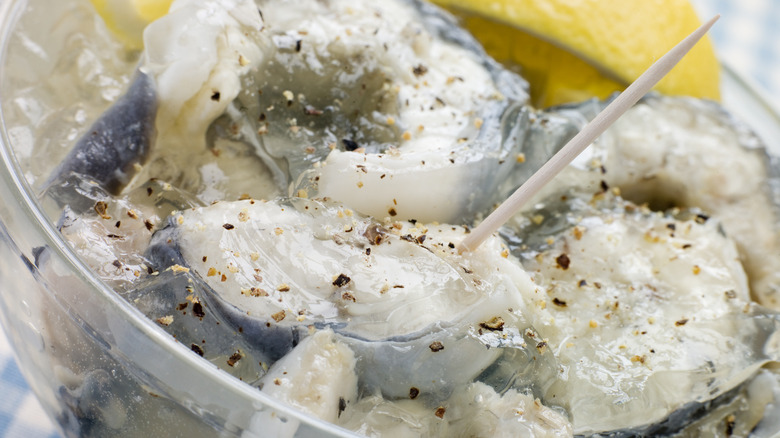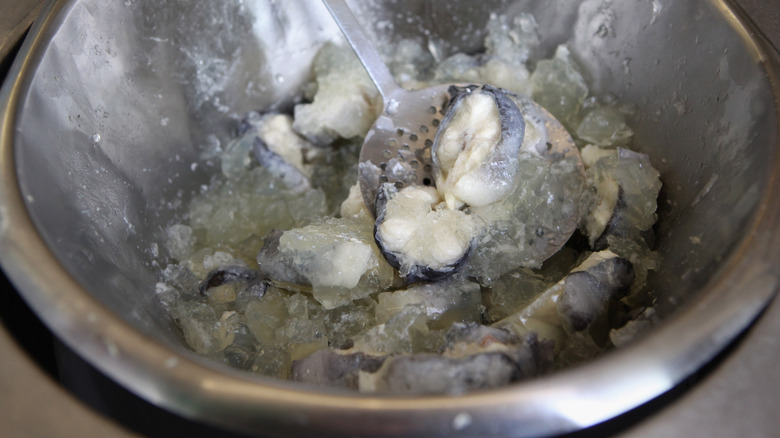The Historic Ties Between Eel And London's Cuisine
If your only exposure to eels has been Ursula's nefarious pets from "The Little Mermaid," it's unlikely you've ever seen them as appetizing, yet millions around the world can't get enough of them. For starters, eels have a rather robust nutritional profile, being a rich source of protein, omega-3 fatty acids, and vitamins A and B12 (via Nutrition Advance). They also have some of the lowest mercury levels among seafood. There is one slight hiccup: Eels have poisonous blood that, if consumed raw, can cramp your heart muscles. However, this threat is neutralized by heat, which is why even in Japan, amongst the masters of raw fish, eels are always cooked.
If you've eaten eel before, it was likely in a Japanese restaurant. Japan accounts for 70% of global eel consumption, per Nippon. There, freshwater eels are known as "unagi" and saltwater eels as "anago," per Japan-Guide. If you aren't sold on the thought of eating eels, try the traditional preparation known as "kabayaki," wherein eels are filleted and grilled with a sweet-savory sauce — it just might change your mind about these creatures.
But while Japan might be the country most people associate with eel, London's jellied eels can't be forgotten.
Food for the working class
Jellied eels became a staple for the working class citizens of London's East End, known as Cockneys, in the 1700s, per Atlas Obscura. They were cheap and, as we previously mentioned, provided robust nutrition for the price. According to Insider, the process of making jellied eels includes gutting the fish and chopping it into segments, but neither the skin nor the bones are removed. The eel pieces are boiled in a pot of water seasoned with various herbs and spices for around 30 to 50 minutes. The cooking times are the longest in the winter when the eels have especially thick skin and high body fat. Once fully cooked, the mixture is cooled and the liquid around the eel meat congeals like aspic.
Historically, the River Thames, which winds through the heart of London, was teeming with European eels. According to the University of Southampton, these fish are born somewhere within the Sargasso Sea, a portion of the Atlantic Ocean near Bermuda. They drift on ocean currents to the European continent where they swim up rivers like the Thames to find food. After about 30 years of river life, the eels swim back to the ocean and make a return journey to the Sargasso.
But things have changed in the 21st century. The Guardian reports that the Thames eel population dropped by 98% between 2005 and 2010. These days, most Londoners get their eels from the Netherlands or Northern Ireland.

